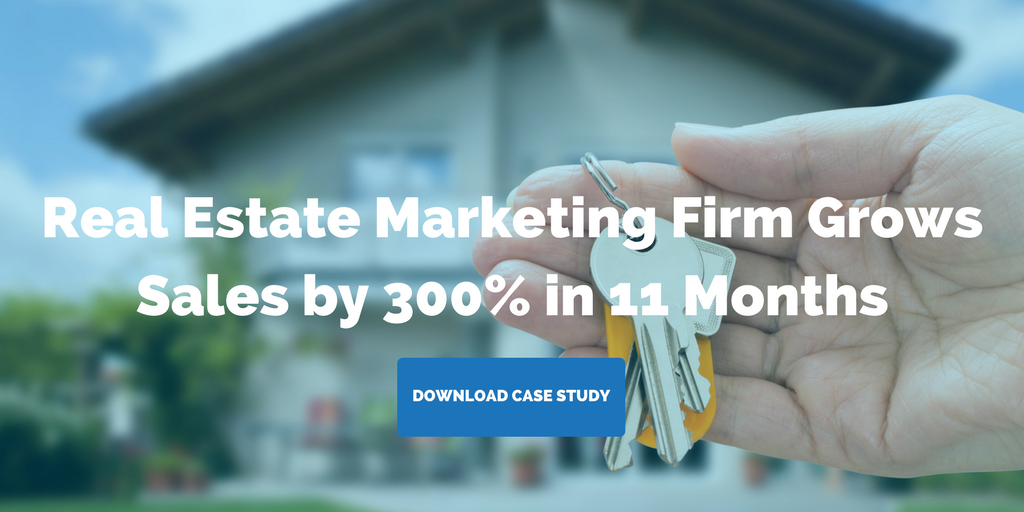Your search results for "Measuring success"

How to Use Instagram for Real Estate Marketing
Instagram is a natural fit for real estate. Here’s what you need to know about using Instagram for real estate marketing.
Highlights:
- Instagram content needs to be consistent in tone and timing, visually appealing and engaging.
- Instagram Stories and Highlights are ideal ways for real estate marketers to give users a look into their brand.
- Hashtags promote engagement and raise brand awareness.
With its highly visual platform, robust Stories feature, and growing user base, Instagram is a natural fit for real estate marketing. The platform boasts over 500 million users and 4.2 billion likes per month. Used strategically, it’s an ideal place to showcase your properties and brand.
Real estate marketers should be aware that Instagram requires a different content and posting strategy from Facebook, Twitter, LinkedIn, or other social media platforms. For example, engagement on Instagram is ten times higher than it is for Facebook, and the demographic is substantially more affluent — making it a no-brainer for luxury real estate.
In general, marketers have been relatively slow to adopt Instagram for real estate marketing, a puzzling reality given its overall popularity and natural fit for the visual nature of real estate. But savvy marketers, like these five real estate accounts for example, have figured out how to use this platform to great success.
Instagram for real estate marketing — the right kind of content
Instagram is a fantastic platform for engaging users. But to get the most out of it, it’s important for real estate marketers to post the right kind of content. Obviously, Instagram is a highly visual medium. It lends itself to beautiful, arresting images, and pitchy hashtags.
Keep your content and visual style consistent. Your profile is your calling card on the platform and should reflect the overall tone you want to set for your brand. This also means posting content at a consistent rate, ideally 2-3 times a day.
Chances are, you’ve had fun playing with Instagram filters. But you may not know that certain lighting and color presets perform better than others. According to Iconosquare, the most popular filters currently on Instagram include Clarendon, Juno, Lark, and Ludwig — and they really do have an impact on engagement.
In order to determine the best types of content to engage your target audience, keep an eye on your competitor and peer brands’ presence on the platform. You can also make use of Instagram analytics tools to track, analyze, and benchmark your Instagram content.
Instagram Stories and Highlights
When the feature was first introduced, Instagram Stories was a gamechanger for the ways in which users interact on social media. Stories are sequences of content that users post to their Instagram accounts over a 24-hour period. Besides photos, Stories can include videos, live and prerecorded, as well as Boomerangs, seconds-long motion clips that play forward and backward.
Stories can also be customized with various design tools, including stickers and filters. Notably for real estate marketers, these tools include location tags, as well as time, weather, or holiday greetings. Audiences can view the Stories of the users they follow within the 24-hour window after they are posted. They can find users with active Stories by scrolling the user icons at the top of the app. Or users can tell their followers that they’ve posted a story by tagging them, which notifies them through a direct message.
For brands, Stories offer the invaluable feature of having metrics wrapped into the experience. The feature allows you to track not only how many views your story has received, but exactly which users have viewed it, and how they interacted with it.
In addition to its Stories feature, Instagram now lets users create a featured group of “Highlights” in various categories on their profile. Stories have only a 24-hour lifespan, so featuring your most effective Stories clips in Highlights gives them a second life, and a chance to engage future followers.
Hashtags
One of the most effective ways to grow your Instagram following is to use hashtags effectively. Since Instagram gives users the ability to follow hashtags that interest them, and they function as links to other relevant content, choosing the right hashtags is the ideal way to reach and engage your target audience.
Keep an eye on accounts of peer brands, to stay up to date with the best hashtags to be using. The most effective hashtags are short, memorable, and easy to read. You can also use a free online tool like InconoSquare or Websta to find relevant hashtags for the real estate industry. For much more, check out our guide to using hashtags for real estate marketing.
If you want engagement, engage
It’s easy to forget that the fundamental benefit of social media is that it’s social. Users want to be part of a conversation. Encourage your followers to interact with you on all your social media platforms, including Instagram. This means responding to comments and brand mentions, as well as engaging with your followers’ content.
Starting and fostering a conversation with your followers and peer brands on Instagram is a key to getting the most out of this platform. Encouraging interaction helps drive brand awareness, and lead generation for your properties. Now, the time has come for you to master Instagram for real estate marketing.
Related Posts
- How to Use Social Media Hashtags in Real Estate Marketing
- Real Estate Instagram Accounts You Should be Following
- Social Media Trends for 2018 Real Estate Marketers Need to Know
Your search results for "Measuring success"

Marketing Automation for Real Estate Marketers is Key to Lead Generation
Real estate marketing is an increasingly complex undertaking. Luckily, marketing automation for real estate is here to help you streamline your efforts.
Highlights:
- Marketing automation tools automate the process of personalizing leads’ interactions with your properties
- Create email workflows, schedule social media posts, and streamline CRM with automation software
Real estate marketing is a massive undertaking, which only grows in complexity as real estate buyers demand more and more personalized experiences throughout the buyer’s journey. Enter marketing automation, featuring a range of solutions for custom lead-nurturing content to all prospects in your database.
The term “marketing automation” describes a variety of tools used to automate the process of personalizing the interactions that your leads have with your properties. Email workflows, social media scheduling tools, and customer relationship management (CRM) are all examples of automated marketing. You can tailor custom email messages based on indicated interests, streamline social media efforts with scheduled posts, evaluate the success of your efforts, and adjust your strategy accordingly.
HubSpot recently reported that businesses using marketing automation to nurture leads received a whopping 451% increase in qualified leads. The same principles apply to marketing automation for real estate. Used correctly, marketing automation software can deliver real-time, personalized messages to prospective buyers and renters at every step of the lead-generation process.
With so many tools and insights available, it’s easy to get overwhelmed. Here’s our guide to what you need to know about marketing automation for real estate.
Marketing automation for real estate: Email workflows
Having a segmented email list — sorted by when a prospect joins the list, what emails they’ve opened, their demographics, etc. — is key to creating effective email workflows. With a quality list, you can ensure you’re sending the most relevant information to your prospects, keeping them invested (and keeping you out of their spam folder).
The first step is setting up a template; once you do that, you can plug in your content, manage your contact list, and schedule your emails in advance.
Our favorite tools for email workflows
1. Customer.io
This tool lets you send targeted messages to your prospects, crafting them based on how they interact with your property, and making personalized messages simple. You can also keep track of conversions and create customer profiles. Our favorite part? It integrates with your mobile app or website, letting you see data in real time and trigger actions by adding in predefined rules.
2. Constant Contact
This powerful tool has some features that are unique — and can take your marketing capabilities beyond the basics. Beyond setting up and managing an automated database, Constant Contact offers Facebook fan promotion, coupons and deals, and event management.
Social media scheduling
Keeping your posts on multiple platforms up to date, consistent, and engaging can be a major time drain. Automating your social media marketing efforts lets you plan ahead and schedule updates on some or all of your social media channels, and lets you easily strategize about peak posting times.
Our favorite tools for social media scheduling: AdRoll
AdRoll is an extremely effective tool for retargeting prospects through re-engagement on Facebook, Twitter, and elsewhere on the web. It offers cross-device and cross-platform retargeting capabilities, as well as flexible segmentation, letting you provide customized experiences that dramatically improve your marketing efficiency. It also offers customized budgeting and full control over ad spend.
Customer Relationship Management (CRM)
Converting website visitors to leads is always the goal, but it often comes with a back-breaking load of time-consuming labor. The right software lets you move your prospect through the sales funnel automatically, sending emails to educate them on the next steps, and scheduling them for viewings.
Our favorite tools for CRM
1. Pardot
Pardot is an all-inclusive marketing automation suite, but it’s particularly strong for amping up your engagement with CRM integration. It’s a great tool for helping your sales team shorten the sales cycle. And, in addition to CRM integration, it offers email marketing, lead nurturing, lead scoring, and ROI reporting.
2. Marketo
This cloud-based marketing software lets you drive revenue with lead management and mobile marketing. It not only helps build prospect relationships, but it helps you sustain them as well. Best of all, you can try it out for free until you’re sure it’s right for your company.
Select one or more of these tools, study them carefully, and get to work. Eventually, marketing automation for real estate will become second nature, save you time, and, most importantly, generate solid leads.
Related Posts:


